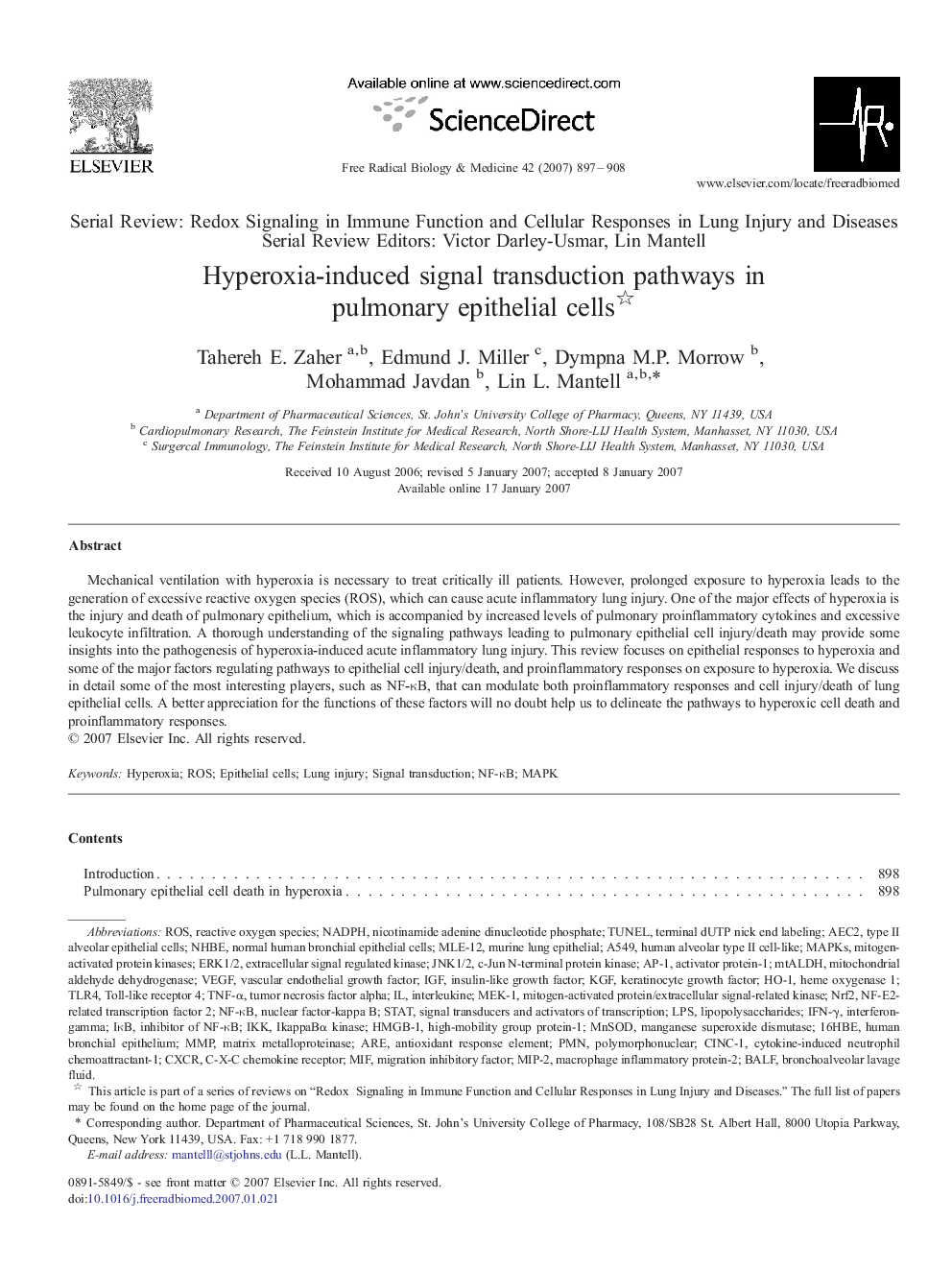| Article ID | Journal | Published Year | Pages | File Type |
|---|---|---|---|---|
| 1911693 | Free Radical Biology and Medicine | 2007 | 12 Pages |
Mechanical ventilation with hyperoxia is necessary to treat critically ill patients. However, prolonged exposure to hyperoxia leads to the generation of excessive reactive oxygen species (ROS), which can cause acute inflammatory lung injury. One of the major effects of hyperoxia is the injury and death of pulmonary epithelium, which is accompanied by increased levels of pulmonary proinflammatory cytokines and excessive leukocyte infiltration. A thorough understanding of the signaling pathways leading to pulmonary epithelial cell injury/death may provide some insights into the pathogenesis of hyperoxia-induced acute inflammatory lung injury. This review focuses on epithelial responses to hyperoxia and some of the major factors regulating pathways to epithelial cell injury/death, and proinflammatory responses on exposure to hyperoxia. We discuss in detail some of the most interesting players, such as NF-κB, that can modulate both proinflammatory responses and cell injury/death of lung epithelial cells. A better appreciation for the functions of these factors will no doubt help us to delineate the pathways to hyperoxic cell death and proinflammatory responses.
